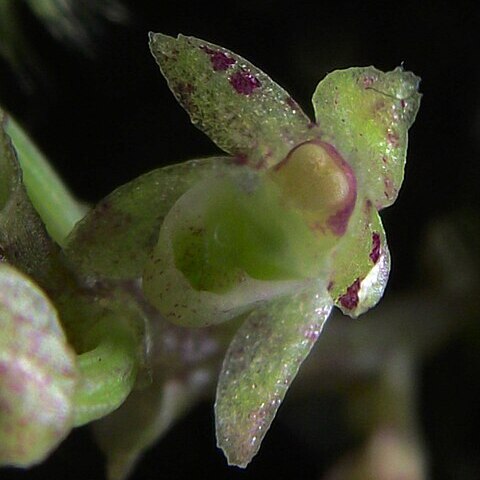Small epiphytic orchids with short stems and relatively thick roots. Leaves few, short, flat, somewhat leathery. Racemes short, few-flowered. Flowers resupinate, small, short-lived (1–3 days), often cupped, greenish. Petals and sepals free, of similar shape and size, not spreading widely. Labellum fixed to column base. Labellum lamina obscurely lobed, without spur or calli. Column short without basal foot. Pollinia 4 in two appressed pairs, hard, waxy, orange, sessile, attached via long narrow stipe to small viscidium.

